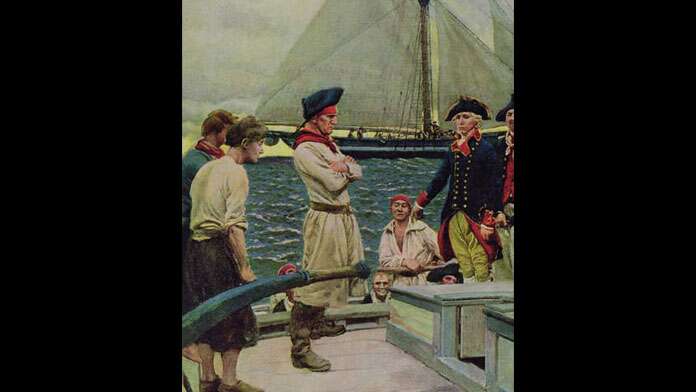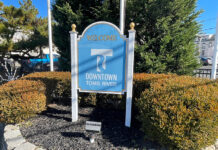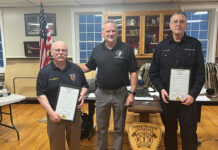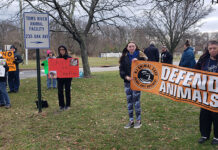
In a recent column of This Month in History, it was noted how the struggle for American independence was fought not just on land, but that it was fought on the seas, too. From this perspective, the Jersey coast played a critical role – with Toms River in the center of it all. Here’s the story.
When the American colonies rebelled against British authority, many of the Jersey coast’s whalers, fishermen, and smugglers were for independence. With a small, new fledgling American navy (created in 1775) and no state navy, privateers were commissioned by both the Continental Congress and State government. Privateering was the use of privately owned vessels to wage war on the seas. Considered nothing more than lawless pirates by the British, the privateers captured enemy ships, men, and supplies.
Center Of The Nest
This area of the Atlantic coastline – some 70 miles of modern-day Monmouth and Ocean Counties – saw 77 naval engagements, both large and small. The Jersey coast became, in British eyes, a troublesome “nest of pirates” and Toms River was the center of that nest.
Our town was a little known, small, nondescript hamlet when the war began. The village, situated along the river which bears its name, would soon become, for the British, home of a “piratical set of banditti.” In this remote area the swamps and pinelands were the least populated and poorest part of Monmouth County (Ocean County was not yet created.). The sandy soil was not suited for farming. Livelihoods were derived from fishing, oystering, milling, and lumbering. When hostilities began, salt production and privateering took center stage.
Salt was a vital commodity during the eighteenth century as it was used for the preservation of food and the making of gunpowder. It sold for about the value of $35 a bushel – a hefty sum at the time.
Near the mouth of the Toms River, the Pennsylvania Council of Safety (the Commonwealth’s Revolutionary-era government) built a large saltworks where today’s Shelter Cove municipal park is located at the eastern tip of Bay Avenue.
With a British blockade of American commerce, salt became precious, particularly for cities, such as the home of the Continental Congress – Philadelphia. Pennsylvania had difficulty in building the works due to militia call-ups and the resultant lack of civilian manpower. The Congress passed a resolution in 1777 recommending that New Jersey “not to call into the field such part of the militia, not exceeding forty, as are necessary employed in the salt works now erecting in the state.” New Jersey Governor William Livingston balked at this resolution as it was inconsistent with the state’s militia law. A compromise was worked out allowing for up to ten men employed at saltworks be exempt from militia service. The salt works were built.
Facing Cranberry Inlet – a vital waterway connecting the ocean to the bay and river (and long since closed due to a nor’easter in 1812) – a tall windmill stood and provided water power for the salt works. It pumped captured bay water which was channeled into a large stove inside its main building which was 169 feet long. Several small buildings were nearby, including two storehouses. The complex was protected by the Patriot militia. An armed sloop – the “Delaware” – patrolled the bay and ocean in its defense.
Cranberry Inlet
Cranberry Inlet would be central to war activities here. Named for the red berries that grew in the bogs around its mouth, it was just fifteen feet deep, but 1,500 foot wide. It allowed access for the sloops and schooners of coastal trade. To its north was “Squan Beach” – a stretch of oceanfront south of the Manasquan River. To its south was “Lord Stirling’s Isle” extending to Barnegat Inlet. They were desolate oceanfront lands of marshes, meadows, and dunes.
During the war, in or near the inlet, the Toms River militia would engage in many skirmishes with the Tories and British. At first, the British gave little attention to Toms River. With their evacuation of Boston and successful invasion of Long Island and occupation of New York in the fall of 1776, the war for independence changed from a regional one – centered in New England – to a broader, continental one. Toms River, at first, was untouched, but in January 1777, a British sloop entered Cranberry Inlet and boarded a Patriot ship hoping to take it as a “prize.” They were unable to get the American vessel underway and fled when local militiamen came to its defense. It was the first of some 23 maritime engagements here.
The British would return in February and would attack another vessel anchored near Good Luck Point where they stripped it of its sails and rigging. Alarmed by this activity near their saltworks, Pennsylvania dispatched a company of infantry for its safety.
Later that year, on Christmas day, the New Jersey Royal Volunteers, or “Royalists,” arrived in Toms River hoping to destroy the saltworks and village. They discovered some buildings with the letter “R” painted on them – a message that the occupants had royal sympathies. There was a reprieve for Toms River.
On April 15, 1778, a British raiding party destroyed the saltworks, but the village was left unharmed. The works would be rebuilt, but as 1778 went on, raids continued and became commonplace.
On September 18, 1778, two British warships anchored off of the inlet in the ocean waters. The inlet was too shallow for their passage. Instead, seven small armed boats were dispatched – with 20 or 30 men each – targeting the 200-ton ship “Washington.” The “Washington” was previously a British ship that had been captured by privateers. It had thousands of bottles of port, beer, and ale, sugar, salt, flour, and cheese when the Americans seized it. It was placed for auction in Toms River and purchased by Philadelphia privateering speculators. They had it outfitted with eight guns and a crew of thirty men, and commissioned to take on the British. It never did. The British successfully captured and burned it on September 18th.
As the war dragged on, skirmishes continued and ran further down the coast and into the Delaware Bay. With Philadelphia as home of the Patriot effort, the Delaware Bay and River were becoming dangerous for American commerce. Places like Toms River were becoming more important – and more vulnerable to enemy attack.
Such was the story of Toms River during the war. It all came to an end for our town in March 1782 when 80 armed British seamen sailed from New York harbor on a three-day journey, travelled through the inlet, landed onshore, and were joined by 40 local loyalists. They marched overland and attacked and destroyed the Patriot fort and most of the village. It was, for us, the “battle of Toms River.”
The Waves Of History
But Toms River – it’s fate so linked to the sea – would ride the waves of history again and would be rebuilt and flourish in the early years of the new American republic.
As for our country – the sea and what happened here and in other coastal places – would teach the Founding Fathers an invaluable lesson.
They learned of the importance of the sea as a natural border and barrier. That’s why they literally wrote sea power into the United States Constitution – just five years after the battle of Toms River. The Constitution states that the Congress shall “provide and maintain a navy” as a means of protecting the nation – while only stipulating that the Congress could “raise and support” an army when needed.
The Founders saw sea power as permanent, but land power as episodic.
George Washington, in his final address, recognized the nation’s geography and strategic position as being protected by the ocean: “Why forego the advantages of so peculiar a situation?” he asked.
Why forego it indeed? Toms River knew that all too well.
SOURCES: “Privateers of the Revolution” by Donald Shomette, Schiffer Publishing, 2016; “The American Revolution in New Jersey” by James Gigantino, Rutgers University Press, 2015; “Down Barnegat Bay” by Robert Jahn, Beachcomber Press, 1980; “To Rule the Waves” by Jerry Hendrix, retired U.S. Navy captain, published in National Review, June 1, 2021
J. Mark Mutter is the retired Toms River municipal clerk. He was chairman of the township’s 250-year anniversary committee in 2017 and its 225-year anniversary committee in 1992, and its Constitution bi-centennial committee in 1987.He is writing a book on the history of Toms River.






